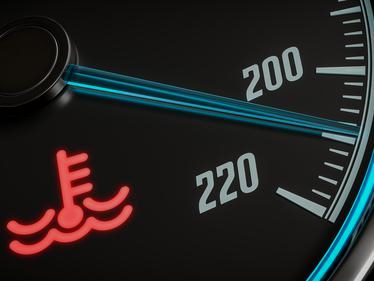What’s That Flashy Temperature Warning Light All About?

So, you’re heading down Te Rapa Road, bit late for work, just bounced over another pothole past Five Cross Roads, and bang — that little red (or sometimes blue) temperature warning light pops up on your dash. Annoying, right? But trust me, that’s one light you definitely want to pay attention to.
Basically, your car’s trying to tell you the engine is getting a bit too hot under the collar. Could be traffic jams heading from Cambridge, stop-start outside Chartwell, or just one of those muggy Hamilton summers where everyone’s air con is getting a hiding. If you ignore it, you’re risking some nasty (and pricey) engine damage. Most modern cars, whether it’s a Mazda Atenza, Nissan X-Trail, BMW 320i, or even the odd Peugeot 308 we see from Morrinsville, all have a cooling system working overtime to keep things under control.
If that light’s on, take a quick look at your temperature gauge as well if you have one. If it’s swinging up into the red, don’t muck around. Pull over somewhere safe, maybe a layby out by Rototuna or just off State Highway 3. You’ll save yourself a headache — and probably your wallet.
Learn more about how the cooling system works
What Causes That Temp Light To Come On?
- Old or Buggered Coolant – Coolant’s vital for keeping things cool. After about 50,000km it gets tired and loses its magic. If you’re running around town in a Toyota Ractis or Kia Sportage that’s overdue for a service, that could be your issue.
- Coolant Leaks – With all the speed bumps and those judder bars in Hamilton East, hoses or seals can crack, or an old radiator might spring a leak. If you spot green or pink puddles under your car (like a Honda Jazz or a Suzuki Swift), it’s time to pop in.
- Thermostat Stuck Shut – Sometimes we get a Volkswagen Tiguan or a Hyundai i30 in with the thermostat jammed, blocking the flow of coolant, so the engine boils up quick as.
- Water Pump Woes – If the water pump gives up, especially if you’ve ignored a dodgy drive belt, that coolant’s not going anywhere and things will heat up fast. Seen this a fair bit after winter with the first run of hot days.
- Radiator or Fan Not Pulling Their Weight – If your fan isn’t spinning up (or the radiator’s all blocked with bugs from the main drag into Ngaruawahia), the coolant can’t dump its heat. Result? Temp starts climbing.
- Dodgy Temp Sensor – Not super common, but every now and then something like a Citroen C4 or an older Corolla will throw a false reading ‘cause the sensor is shot. Always worth a look.
Hamilton’s Stop-Start Drives & How That Makes It Worse
With all the crawling along Victoria Street, the short hops to The Base, or those chilly foggy mornings rolling over from Gordonton, your engine’s cooling system is always being tested. Short trips, heavy traffic, hot days — they all put extra stress on the system. That’s why we see these warning lights on all sorts, from hybrids to big diesel utes.
Need Cooling System Repairs? We’ll Sort It.
Got the temp warning light on? Don’t chance it — get it checked. One of our techs can quickly suss out if it’s a cracked hose, a blocked radiator, or just old coolant needing a change. We’ve sorted everything from tricky Skoda Octavias to Honda Freed imports for blokes and ladies alike, right here in Hamilton.
If you need car service in Hamilton, WOF, hybrid repair or just want honest advice about your cooling system, pop in or give us a bell at Grimmer Motors. It’s way less hassle (and a lot cheaper) than an engine replacement, trust us.

